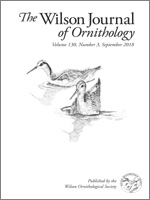Nest predation has driven the evolution of specialized behaviors that decrease the probability that a predator encounters a nest. We collected descriptions from the literature of a behavior wherein male and female adults fly to their nest as a pair, with one bird flying onward or veering off while the other enters the nest. We suggest that the most likely function of this behavior is to decrease the risk of nest predation from visual nest predators. In this hypothesis, visual nest predators are distracted by the flying bird and thus fail to observe the bird arriving to the nest entrance (and the nest itself), although the putative adaptive value of this behavior remains to be confirmed. While this behavior has been sporadically noted in the natural history literature, few ornithologists are aware it is found across multiple taxa, especially in the Neotropics. We show that this behavior occurs in at least 28 species across 5 distinct families (and 11 genera) of passerines. We propose a classification scheme for this and similar behaviors and discuss factors hypothesized to promote the evolution of this behavior (e.g., mate guarding, building enclosed nests). We call this behavior “coordinated misdirection” (or “desvío coordinado” in Spanish) because it depends on the cooperation of at least 2 birds, and its presumed function is a visual misdirection—a ruse to draw the observers' attention away from the nest. Finally, we encourage future research so that the evolutionary history of the behavior can be explored and the behavior can be analyzed under a life history framework.
How to translate text using browser tools
1 September 2018
Coordinated misdirection: a probable anti-nest predation behavior widespread in Neotropical birds
Eric R. Gulson-Castillo,
Harold F. Greeney,
Benjamin G. Freeman
ACCESS THE FULL ARTICLE
antipredator behavior
breeding biology
distraction display
dynamic nest-crypsis behavior
natural history
nest defense





